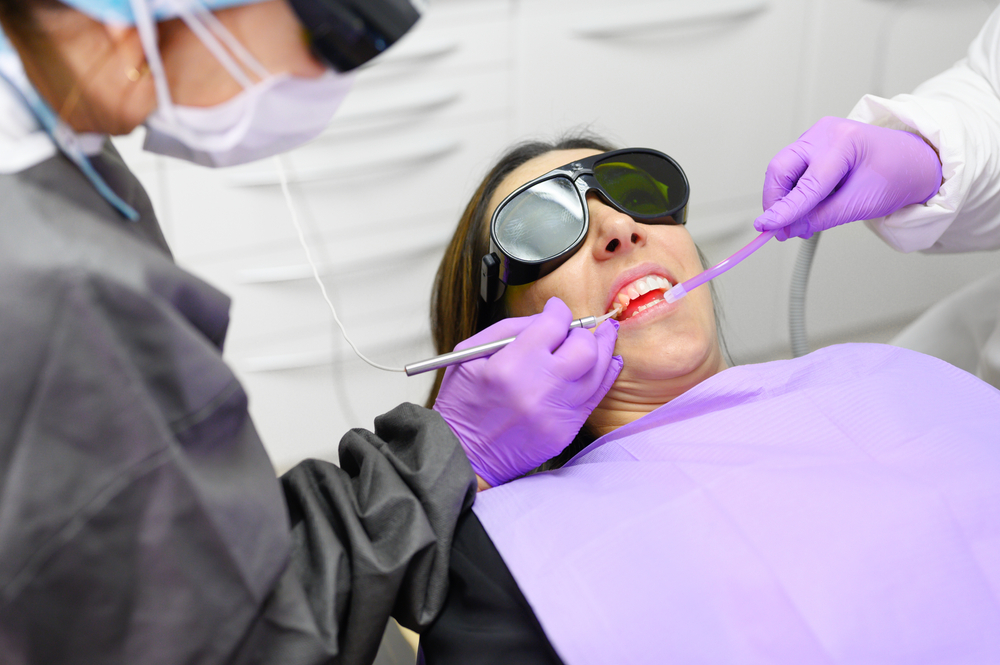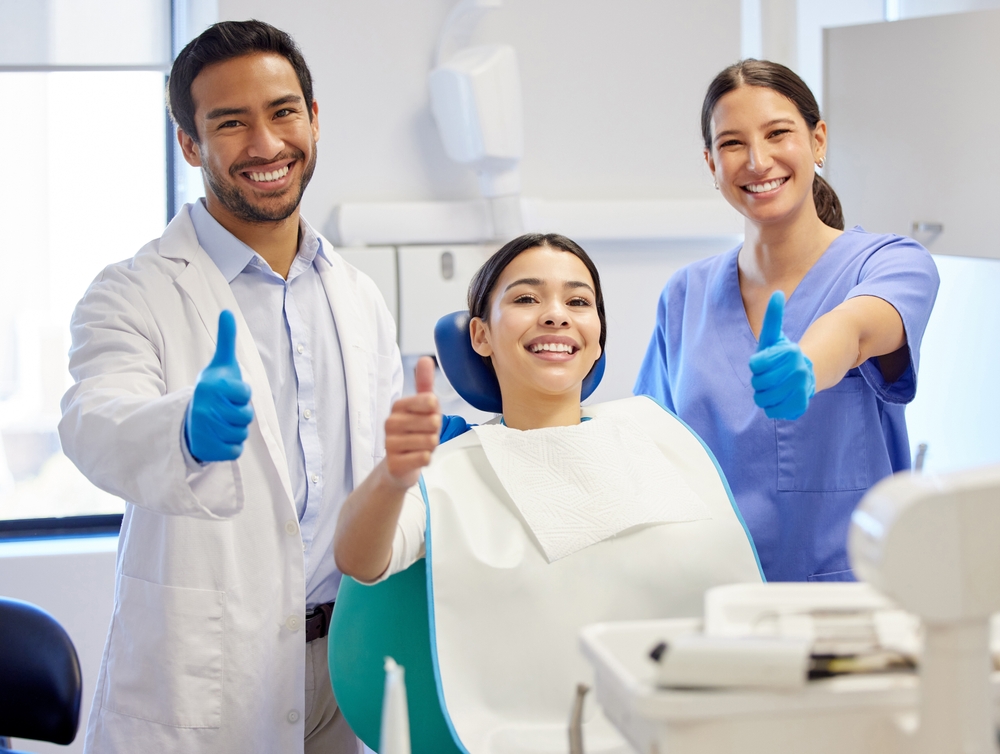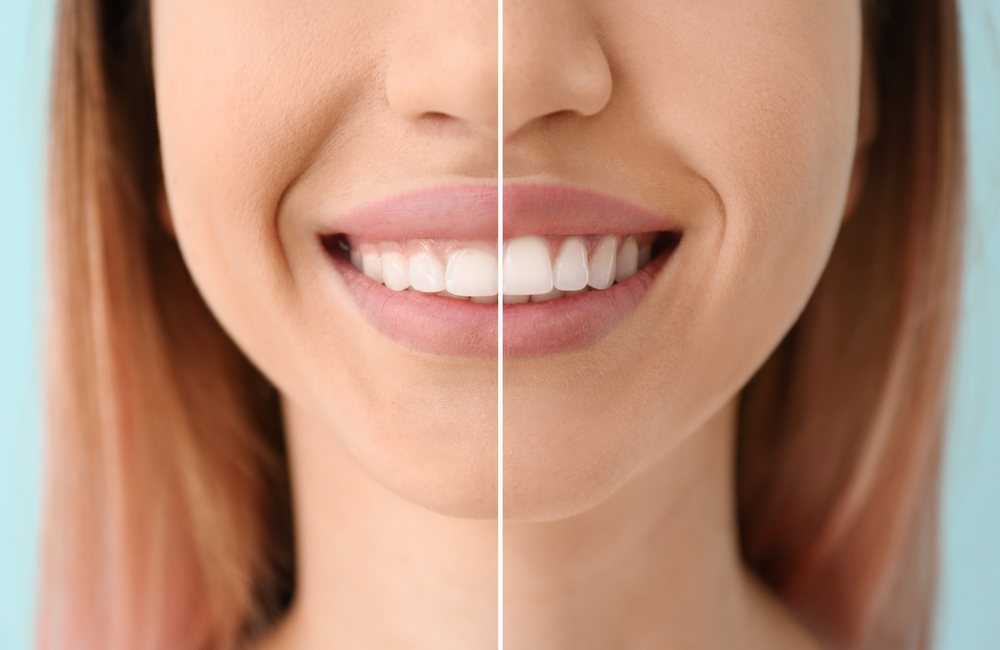Imagine undergoing a dental procedure with minimal pain, reduced bleeding, and a faster recovery time. This is no longer a distant dream but a reality, thanks to the advent of laser technology in dentistry. Lasers have transformed the patient experience, making dental treatments more comfortable and efficient. From treating gum disease to preparing teeth for fillings, lasers offer a wide range of applications that ensure better outcomes with fewer complications. Join us as we delve into the fascinating world of lasers in dental procedures, exploring how this cutting-edge technology is revolutionizing the way we approach oral health.
In This Blog:
- What are Dental Lasers and How Do They Work?
- Advantages of Laser Technology in Dentistry
- How Lasers Can Be Used in Dentistry and Comparison to Traditional Methods
What Are Dental Lasers and How Do They Work?
Dental lasers are advanced instruments that emit a concentrated beam of light energy. This laser light can be precisely controlled and manipulated to interact with various tissues in the mouth. Dental lasers come in two main types based on their application:
- Hard Tissue Lasers: These lasers are used on teeth and bone. TThey are ideal for procedures such as cavity preparation and tooth sensitivity treatment.
- Soft Tissue Lasers: These are used on the gums and other soft tissues. Types include Diode lasers and Carbon Dioxide (CO2) lasers. They are commonly used for gum reshaping, treating gum disease, and other soft tissue procedures.
How Dental Lasers Work
The operation of dental lasers is based on the principles of light energy absorption and tissue interaction. Here’s a closer look at how they function:
Emission of Laser Light:
Dental lasers produce a focused beam of light at a specific wavelength. This wavelength is chosen based on the type of tissue being treated to ensure optimal absorption and effectiveness.
Tissue Interaction:
When the laser light is directed at the tissue, it interacts with the target cells. The energy from the laser can cut, vaporize, or shape the tissue depending on the settings and type of laser used.
Hard Tissue Interaction:
Hard tissue lasers work by absorbing water and hydroxyapatite (a mineral found in teeth and bones). The laser energy rapidly heats and vaporizes the water in the tissue, effectively removing decayed or damaged areas without harming surrounding healthy tissue.
Soft Tissue Interaction:
Soft tissue lasers are absorbed by water and hemoglobin (a protein in blood). This allows the laser to precisely cut or ablate soft tissue while simultaneously coagulating blood vessels. This process reduces bleeding and promotes faster healing.
Sterilization Effect:
The high-energy light beam also has a sterilizing effect, killing bacteria and reducing the risk of infection in the treated area.
Precision and Control:
Dental lasers offer superior precision, allowing dentists to perform highly accurate treatments with minimal impact on surrounding tissues. This precision is particularly beneficial in delicate procedures such as gum contouring or cavity removal.
Advantages of Laser Technology in Dentistry
Minimally Invasive
One of the most significant advantages of laser technology in dentistry is its minimally invasive nature. Lasers allow dentists to perform procedures with a high degree of precision, targeting only the affected areas and leaving surrounding healthy tissue untouched. This precise targeting minimizes tissue damage and reduces the need for extensive cutting or drilling, making treatments less invasive than traditional methods. Patients benefit from less trauma to their tissues, leading to a more comfortable and stress-free experience during and after the procedure.
Reduced Need for Anesthesia
Many dental procedures performed with lasers require little to no anesthesia. The precision of laser technology means that procedures can often be completed with minimal discomfort. This is particularly beneficial for patients who are anxious about dental treatments or those who have a low pain threshold. By reducing or eliminating the need for anesthesia, laser dentistry also shortens the overall time spent in the dental chair and reduces the risks associated with anesthesia.
Reduced Bleeding and Swelling
Lasers have a unique ability to coagulate blood vessels as they cut through tissue. This coagulation effect significantly reduces bleeding during and after procedures, which is a major advantage over traditional methods that can cause more extensive bleeding. Additionally, the reduced trauma to tissues minimizes post-operative swelling, leading to a more comfortable recovery for patients. The combination of less bleeding and swelling means patients can often resume their normal activities more quickly.
Faster Healing and Recovery Times
The precision and reduced tissue damage associated with laser procedures contribute to faster healing and recovery times. Patients typically experience less discomfort and a quicker return to normal activities compared to traditional methods. The laser’s ability to stimulate tissue regeneration also aids in faster healing. For example, after periodontal therapy, the treated gums heal more quickly, reducing the time patients need to spend in recovery.
Increased Precision and Accuracy
Lasers offer unparalleled precision and accuracy in dental procedures. This allows for more conservative treatments, preserving more of the healthy tooth and gum tissue. The exactness of laser technology ensures that only the targeted area is treated, reducing the risk of complications and improving the overall outcome of the procedure. For instance, in cavity removal, lasers can precisely eliminate decayed tissue without affecting the surrounding healthy structure, leading to a better fit and longer-lasting dental restorations.
Reduced Risk of Infection
The high-energy light beam from lasers has a natural sterilizing effect, which significantly reduces the risk of infection. The laser effectively kills bacteria in the treated area, making it particularly advantageous in procedures such as periodontal therapy and root canal treatments, where infection control is critical. This reduction in infection risk enhances the overall success rate of the treatments and contributes to better long-term oral health outcomes.
Enhanced Patient Comfort
The use of lasers in dentistry greatly enhances patient comfort both during and after the procedure. The reduced need for anesthesia, minimal bleeding and swelling, and quicker recovery all contribute to a more pleasant experience. Patients who are apprehensive about dental treatments often find laser procedures to be less intimidating and more tolerable. The quiet, vibration-free operation of lasers also helps alleviate the anxiety associated with traditional dental drills.
Procedure Duration
Laser treatments can often be completed more quickly than traditional methods. The efficiency of lasers in cutting and coagulating tissues reduces the time required for many procedures. This means that patients spend less time in the dental chair, which is especially beneficial for those with busy schedules or those undergoing multiple treatments in one visit.
Versatility
Lasers are versatile tools that can be used in a wide range of dental procedures, from cosmetic treatments like teeth whitening and gum reshaping to therapeutic interventions like cavity removal and periodontal therapy. This versatility makes lasers a valuable addition to any dental practice, enabling dentists to offer a broader array of treatment options to their patients.
Improved Outcomes
The combination of precision, reduced risk of infection, minimal invasiveness, and enhanced patient comfort leads to improved outcomes for laser dental treatments. Patients experience better overall results, with fewer complications and a higher satisfaction rate. Whether for routine procedures or complex treatments, the advantages of laser technology in dentistry ensure superior care and long-term benefits for patients.
How Lasers Can Be Used in Dentistry and Comparison to Traditional Methods
Gum Reshaping and Contouring
- Laser Method: Lasers are highly effective for reshaping and contouring gums. They can precisely remove excess gum tissue to create a more aesthetically pleasing gum line. The laser’s ability to coagulate blood vessels results in less bleeding and a quicker recovery.
- Traditional Method: Traditional gum reshaping often involves a scalpel, which can cause more bleeding, swelling, and discomfort. The recovery time is typically longer due to the invasiveness of the procedure.
Treatment of Gum Disease (Periodontal Therapy:
- Laser Method: Lasers can remove infected gum tissue and bacteria from periodontal pockets. This non-invasive approach reduces bleeding, swelling, and discomfort, and promotes faster healing.
- Traditional Method: Traditional periodontal therapy may involve scaling and root planing with manual tools, which can be more painful and require longer recovery times. Surgery may also be needed in severe cases, involving more extensive tissue removal.
Frenectomy and Treatment of Tongue-Tie
- Laser Method: Lasers can quickly and efficiently perform a frenectomy to treat tongue-tie or lip-tie. The procedure is virtually painless and causes minimal bleeding, with a fast recovery.
- Traditional Method: Traditional frenectomy involves cutting the frenum with a scalpel, which can be more painful, cause more bleeding, and require sutures, leading to a longer recovery period.
Removal of Benign Oral Tumors and Lesions
- Laser Method: Lasers allow for the precise removal of benign tumors and lesions with minimal damage to surrounding tissues. The procedure is less invasive, with reduced risk of infection and faster healing.
- Traditional Method: Surgical removal with a scalpel can be more invasive, causing more bleeding and requiring sutures. Recovery is generally longer, and the risk of infection is higher.
Cavity Detection and Removal
- Laser Method: Lasers can detect and remove cavities early, preserving more of the natural tooth structure. The procedure is often painless and does not require anesthesia.
- Traditional Method: Traditional cavity detection relies on visual examination and X-rays, which may not catch cavities as early. Removal involves drilling, which can be uncomfortable and often requires anesthesia.
Tooth Preparation for Fillings
- Laser Method: Lasers can prepare a tooth for a filling by precisely removing decayed tissue. The process is less invasive, reducing the need for anesthesia and preserving more healthy tooth structure.
- Traditional Method: Traditional preparation involves drilling, which can be uncomfortable, more invasive, and often requires anesthesia. It may also remove more healthy tooth structure than necessary.
Treatment of Tooth Sensitivity
- Laser Method: Lasers can seal the tubules on the root surface of sensitive teeth, providing immediate relief from sensitivity to hot, cold, or sweet stimuli.
- Traditional Method: Traditional treatments for tooth sensitivity include desensitizing agents or fluoride treatments, which may not provide immediate or lasting relief.
Teeth Whitening
- Laser Method: Lasers enhance the effectiveness of teeth whitening treatments by accelerating the chemical reaction of bleaching agents. This results in faster and more noticeable whitening results in a single visit.
- Traditional Method: Traditional teeth whitening methods may involve trays, gels, or strips, which can take longer to achieve desired results and may require multiple applications.
Biopsy and Lesion Removal
- Laser Method: Lasers can perform biopsies and remove lesions with high precision. The laser’s ability to cut and coagulate simultaneously minimizes bleeding and promotes faster healing.
- Traditional Method: Traditional biopsy and lesion removal involve cutting with a scalpel, which can cause more bleeding, require sutures, and lead to a longer recovery period.
Temporomandibular Joint (TMJ) Treatment
- Laser Method: Lasers can be used to treat TMJ disorders by reducing pain and inflammation in the jaw muscles and joints through non-invasive laser therapy.
- Traditional Method: Traditional TMJ treatments may include medications, physical therapy, or invasive surgical procedures, which can have longer recovery times and higher risks.
Comparison Summary
Laser dentistry offers numerous advantages over traditional methods, including:
- Minimally Invasive Procedures: Lasers cause less trauma to tissues, resulting in less pain, bleeding, and swelling.
- Reduced Need for Anesthesia: Many laser procedures can be performed with little to no anesthesia.
- Faster Recovery: Patients typically experience quicker healing times and can return to normal activities sooner.
- Increased Precision: Lasers allow for more accurate targeting of tissues, preserving more healthy tissue and improving outcomes.
- Lower Risk of Infection: The sterilizing effect of lasers reduces the risk of infection.
In contrast, traditional methods often involve more invasive techniques, greater discomfort, longer recovery times, and higher risks of complications. The benefits of laser technology make it a highly effective and patient-friendly option for a wide range of dental procedures.
Conclusion
Laser technology has significantly transformed the field of dentistry, offering a range of benefits that enhance both the effectiveness of treatments and the overall patient experience. From minimally invasive procedures and reduced need for anesthesia to faster healing and increased precision, dental lasers have revolutionized the way oral health issues are addressed. Compared to traditional methods, laser dentistry provides superior outcomes with less discomfort and quicker recovery times. As this technology continues to advance, its applications in dental care are expected to expand even further, making treatments more efficient and accessible. If you’re considering a dental procedure, discussing the potential advantages of laser dentistry with your dentist can help you make an informed decision about your oral health. Embrace the future of dental care with confidence, knowing that laser technology is paving the way for a brighter, healthier smile.







